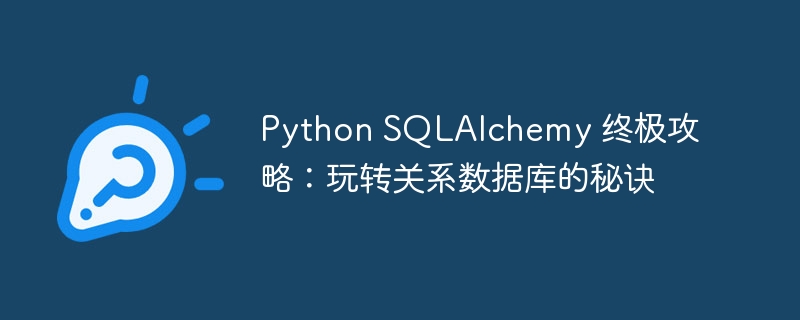

SQLAlchemy is a powerful python ORM (Object Relational Mapping) tool for connecting Python code to relationshipsDatabase, it can convert complex data operations into simple Python syntax, allowing developers to focus more on business logic while having complete control over the database structure.
1 2 3 4 5 6 7 8 |
|
1 2 3 4 5 6 7 8 9 |
|
1 2 3 4 5 6 7 8 9 10 11 12 |
|
1 2 3 4 5 6 7 8 9 10 11 12 13 14 15 |
|
1 2 3 4 5 6 7 8 9 10 11 12 13 14 15 |
|
1 2 3 4 5 6 7 8 9 10 11 12 13 14 15 |
|
1 2 3 4 5 6 7 8 9 10 11 12 13 14 15 16 17 18 19 20 21 22 23 24 25 26 27 28 29 |
|
1 2 3 4 5 6 7 8 9 10 11 12 13 14 15 16 17 18 19 20 21 22 23 24 25 26 27 28 29 30 31 32 33 34 35 36 37 38 39 40 41 |
|
SQLAlchemy opens up a convenient road to relational databases for us. It not only simplifies data operations, but also provides flexible relationship modeling capabilities, making data management easier and more efficient. I hope this guide can inspire you on your SQLAlchemy journey and help you travel thousands of miles in the world of data.
The above is the detailed content of Python SQLAlchemy Ultimate Guide: Secrets to Playing with Relational Databases. For more information, please follow other related articles on the PHP Chinese website!




